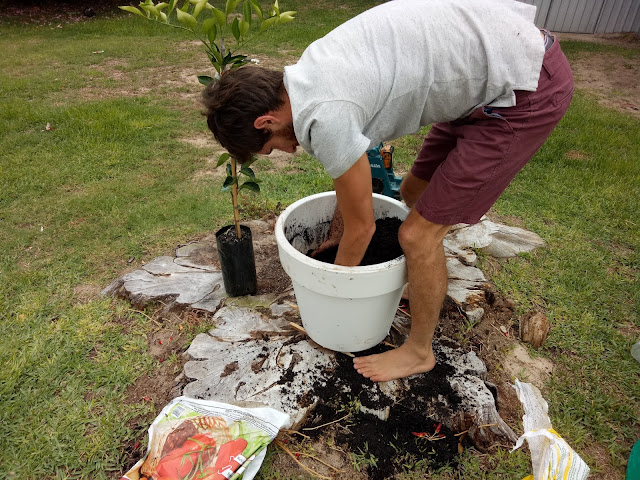Today marks the last day of March, and with it brings Western Australia another month closer to Winter. Temperatures will drop slightly, however, we can still expect a lot of sunshine to work with; so get your shovels, get outside, and start planting!
Let's take it back to when I started my raised bed.
If you missed it, you can read all about that here in Part 1 and Part II. I cover everything from the setup of my raised garden bed, soil composition, watering systems and schedule. Check it out!
The above garden bed was started on the 9th of March. Fast forward to today and I'm not too disappointed in the fact that I won't be able to feature a bountiful harvest for the first edition of 'The Monthly Harvest!' These special posts, debuting today, will be uploaded at the end of each month, featuring specifically the harvest of fruits and vegetables. Yum!
Despite the lack of harvest, there is still reason to celebrate. Small victories moves us forward. And for anyone just getting into gardening, positive signs like these will help you stay in the right direction, and master the ideal growing conditions for each of your plants, helping them thrive.
(The photo below was taken two weeks ago. Note the snow pea at the very back.)
And Today:
This thing is reaching for the stars. Well, more likely the sun, but you know what I mean? =p
I'm actually really impressed with how well it is doing. I also planted two others. Nothing to write home about honestly; one is plodding along okay, whilst the other seems slow. I'll keep you posted on how they turns out. Snow peas are excellent additions to curry, specifically Thai, and also do well stir-fried.
On the 19th of March, I was sneaky and transplanted a few pots worth of eggplant seedlings. Amongst a few other things!
Also note the Purple King Bean in the back, which was also planted at the same time.
And Today:
&
These King Purple Beans aren't far from being ready to be picked (they are ready when their skin is purple all over). You can also eat them raw before they are ready, so the next small one that pops up, will be having a meeting with my face (I'll let you know what I think!)
. One of the pods is actually a stupidly large size haha. I also need to construct a better trellis, bean pods are popping all over and their weight will put a fair amount of strain on the stalks if left unattended.
I've moved Mr. Purple and all of the eggplants to a full-sun location, and since then all of them have have responded really well. I just have to watch the soil moisture levels now, as they can easily dry out if I slip up (these guys are manually watered, I have to add them to the drip-line soon).
Before I forget - 2 Weeks ago!
2 Weeks Later!
(Cucumber)
The cucumber and capsicum yellow banana are growing along really well. I've already tried the yellow capsicum in a Thai green curry and it went down really well. Superb! Can't wait to incorporate more of my fresh goods to the kitchen!
Thanks for coming along guys and take care!





































